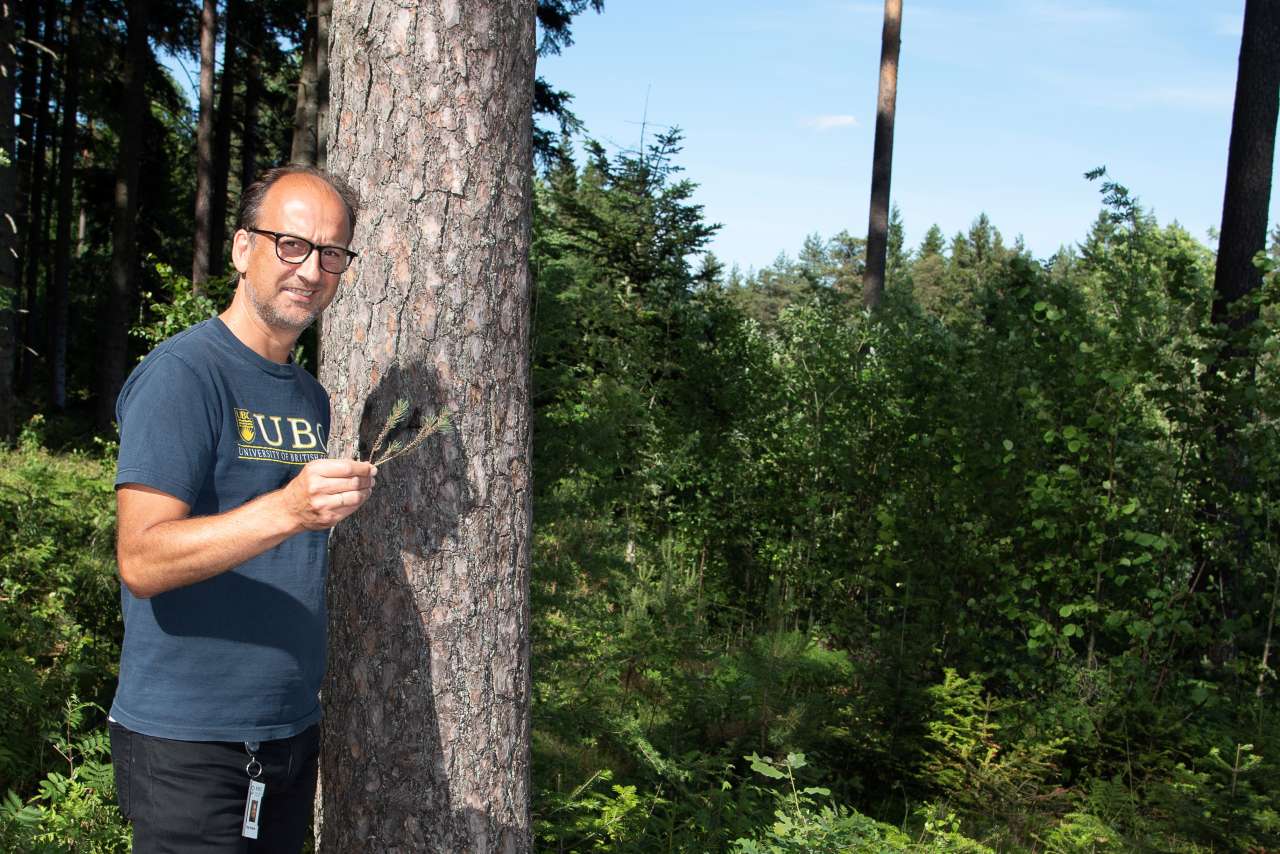Mapping the spruce bark beetle genome

Photo: Erling Fløistad
The European spruce bark beetle can kill more than 100 million cubic meters of forest in a year. Now, researchers hope that a complete map of the beetle’s genetic material will help limit its destructive potential.
In Norway, the European spruce bark beetle is the only insect that attacks and kills spruce trees on a large scale. Researchers from Norway, Sweden, Germany, and the Czech Republic have now, for the first time, succeeded in mapping the genetic material (the genome) of the European spruce bark beetle. In the long run, this information will help us understand how and why the beetle has become such a serious pest in our forests.
“The European spruce bark beetle has always been a major pest, but in recent years it has become more damaging than ever as it is killing millions of trees in Europe,” explains Paal Krokene, senior researcher at NIBIO and bark beetle expert.
“The fact that we have now succeeded in mapping the species’ genetic material is a huge breakthrough, and something I have been dreaming of for years,” he says.
A genome can be likened to a genetic recipe book in which all the genes of a species are described. Researchers can use this “recipe book” to understand how the European spruce bark beetle functions.
“Do the genes of the European spruce bark beetle conceal any interesting stories? The genome will help us answer that question. It is all a matter of knowing your enemy,” he explains.
The mapping is not only welcome news for the researchers:
“This is exciting and relevant research for forestry, both in terms of the industry and forest management,” says Ingrid Knotten Haugberg, senior adviser for the County Governor of Vestfold and Telemark.
The European spruce bark beetle is a major factor behind the forest damage suffered in Eastern Norway after the warm and dry summer of 2018. Bark beetle populations appear to be growing, and the County Governor’s office is concerned that tree killings will increase in the years to come.
Contacts

Contacts

Publications
Authors
Daniel Powell Ewald Groβe-Wilde Paal Krokene Amit Roy Amrita Chakraborty Christer Löfstedt Heiko Vogel Martin N. Andersson Fredrik SchlyterAbstract
Conifer-feeding bark beetles are important herbivores and decomposers in forest ecosystems. These species complete their life cycle in nutritionally poor substrates and some can kill enormous numbers of trees during population outbreaks. The Eurasian spruce bark beetle (Ips typographus) can destroy >100 million m3 of spruce in a single year. We report a 236.8 Mb I. typographus genome assembly using PacBio long-read sequencing. The final phased assembly has a contig N50 of 6.65 Mb in 272 contigs and is predicted to contain 23,923 protein-coding genes. We reveal expanded gene families associated with plant cell wall degradation, including pectinases, aspartyl proteases, and glycosyl hydrolases. This genome sequence from the genus Ips provides timely resources to address questions about the evolutionary biology of the true weevils (Curculionidae), one of the most species-rich animal families. In forests of today, increasingly stressed by global warming, this draft genome may assist in developing pest control strategies to mitigate outbreaks.
